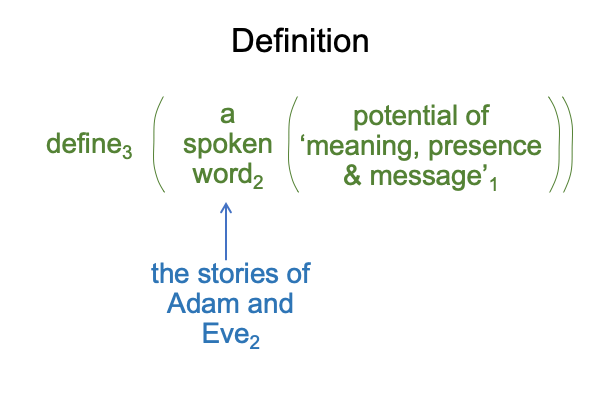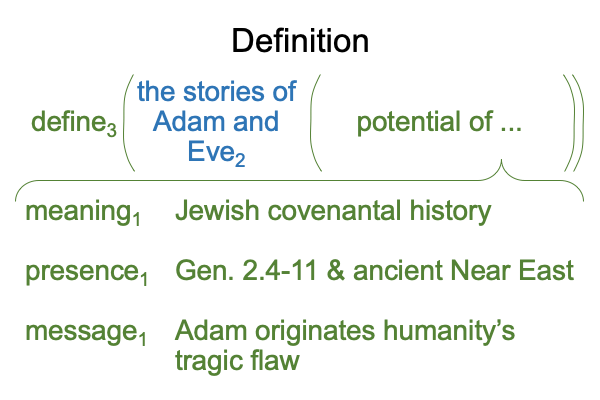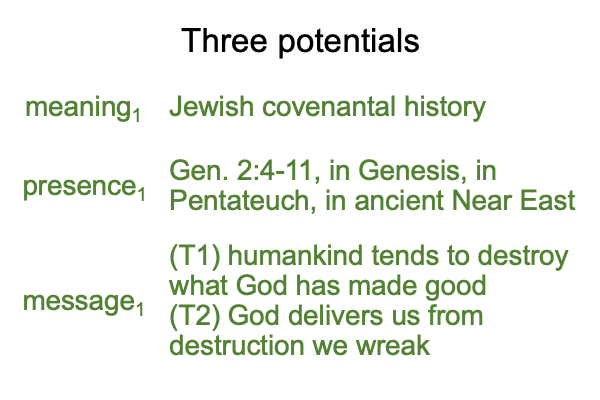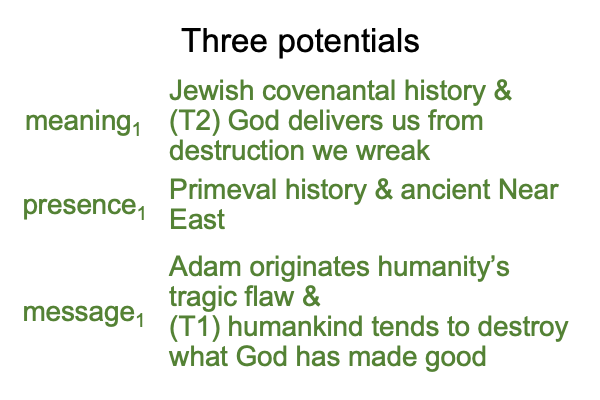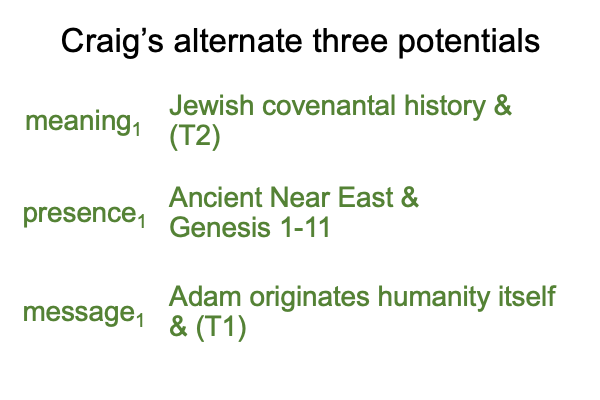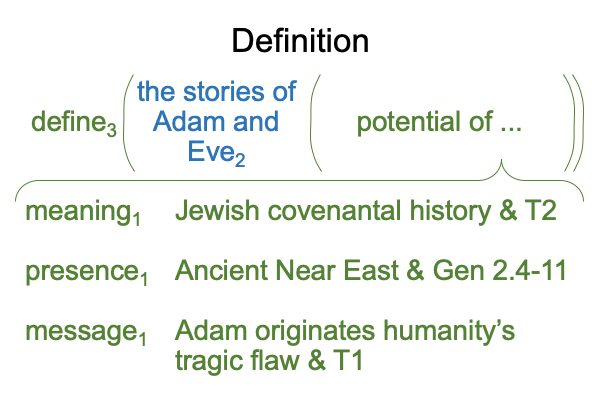0051 Part Two consists of six chapters, arranged into an A:B:C:C’:B’:A’ semitic textual structure.
A:A’, chapters 2 and 7, pair the nature of myth with Adam in the New Testament. In the New Testament, Adam is treated as a real person associated with something that really happened. The New Testament is a historical document. But, the stories of Adam and Eve are myths, according to ten criteria proposed by experts on folklore.
B:B’, chapters 3 and 6, pair the first six criteria that characterize myth with the question, “Are myths believed to be true?”
C:C’, chapters 4 and 5, pair the four remaining criteria that characterizes myth with the question, “Is Genesis 1-11 mytho-history?”
0052 According to An Instructor’s Guide to An Archaeology of The Fall, the semitic textual structure asks the reader to recognize a possibility. That possibility should be apparent by the pairings. The possibility is a myth, arising in history,while at the same time, veiling the historical events or processes giving rise to the myth.
0053 A mytho-history is more than a myth in history.
A mytho-history tells of something that really happened.
But, we cannot figure out what that something is, without independent information.
0054 I start with A:A’.
The initiation and culmination of the question, “Who is Adam?”, bookends the combined Old and New Testaments. Even more curious, in the middle, Adam and Eve are rarely mentioned, while the lessons of the preceding Creation Story are frequently celebrated.
One answer to that riddle is found in the January 2022 blog, Looking at Mark Smith’s Book (2019) The Genesis of Good and Evil.
0055 In the beginning (A), Adam coheres to the meaning underlying Genesis 2.4-11. Adam is the first in the line of the Jewish covenant. The covenant manifests God saving His people from their difficulties and… yes… transgressions (T2).
0056 In the end (A’), Adam associates to the presence and message underlying Genesis 2.4-11.
0056 For presence, the stories of Adam and Eve are set in the very ancient world of the Wet Neolithic Period of southwestern Asia. This is the same time when the Ubaid culture gels on the edge of the infilling Persian Gulf. Four rivers flow into the expanding Persian Gulf. Two are the Tigris and the Euphrates. The other two are now dry wadis.
These points are discussed in the February 2022 blog, Looking at Carol Hill’s Article (2021)”Original Sin with Respect to Science”, at www.raziemah.com.
On top of that, Genesis 1-11 reads like a text written on a cuneiform tablet, buried in the ruins of a royal library, and excavated and translated by an enterprising archaeologist.
0057 For message, the stories of Adam and Eve memorialize an apparently historical incident or process in the manner of myth. Adam and Eve open the door to sin and death. The door opens further with the stories of Cain and Abel. The door is wide open with Lamech. Lamech, who has two wives, kills a fellow, who has no wife. The door is off its hinges as elitist sons of gods pluck the daughters of men for their desires. God laments the course of human events. Then, comes Noah’s flood.
0058 Surely, after Adam, humankind tends to destroy what God has made good (T1).
But, “humankind” is not all humanity.
“Humankind” consists of those doomed to humanity’s tragic flaw.
Genesis 2:4-11 tells of the Ubaid, the Uruk and the Sumerian Dynastic of southern Mesopotamia.
Humanity’s tragic flaw starts with the Ubaid, then spreads across the planet, on the wings of mimicry.
No one can figure out what really happened in the stories of Adam and Eve, without using independent information from archaeology and other disciplines.
0059 Such is the drama of the masterwork, An Archaeology of the Fall, by Razie Mah, available at smashwords and other e-book venues.

